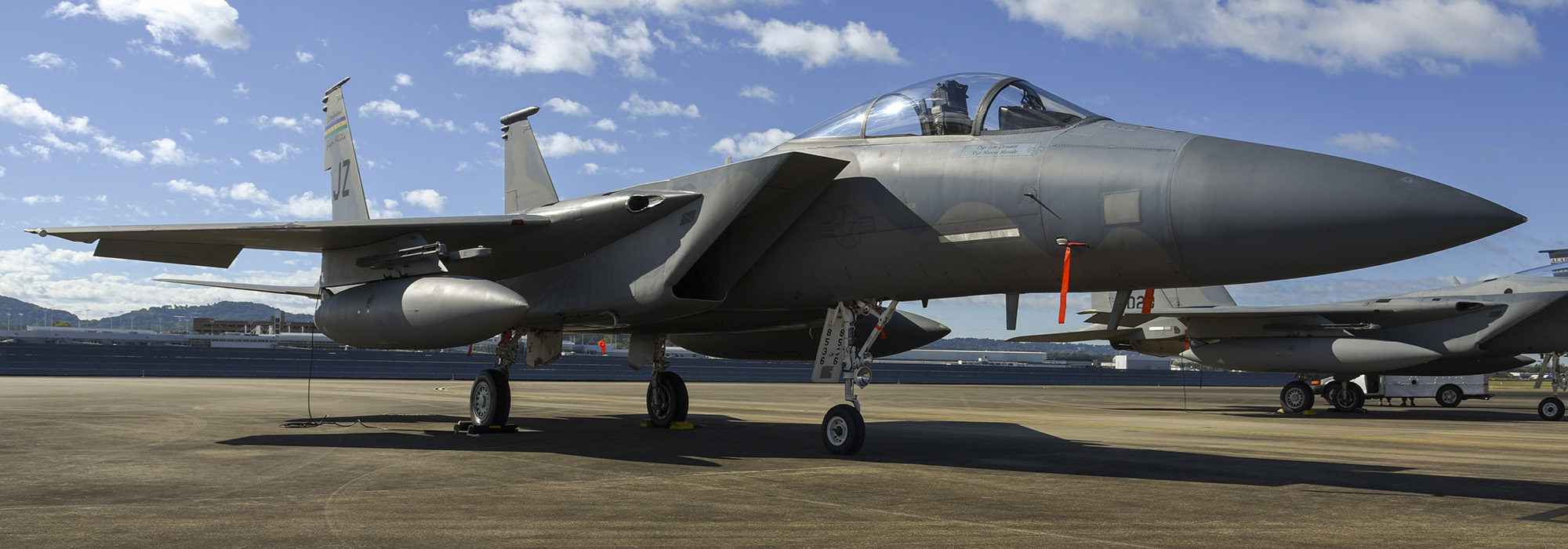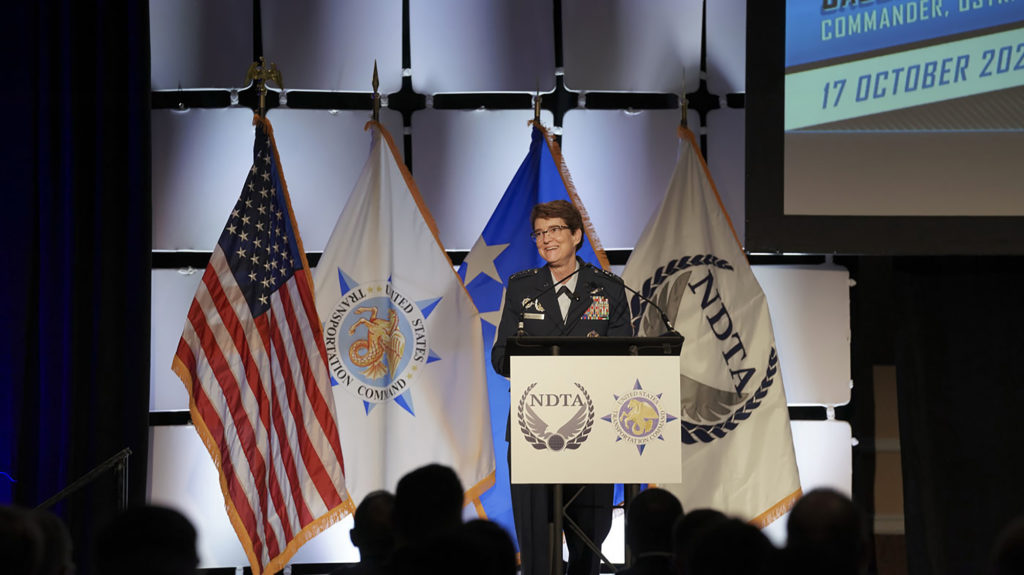Air Force Strength Now ‘Very Weak’
By Greg Hadley
The Air Force’s readiness has hit new lows due to pilot shortages, low flying hours, and aging aircraft, the Heritage Foundation’s 2023 Index of U.S. Military Strength found—leading the conservative think tank to give the service its lowest possible rating of “very weak.”
The Space Force, meanwhile, still needs more assets to cope with rapid growth in the domain, the report found. That, coupled with a lack of publicly known offensive and defensive weapons systems and capabilities, led to a rating of “weak” for the second year in a row.
Overall, the U.S. military’s strength was rated as “weak” on a five-point scale of very weak to very strong, the lowest score Heritage has given the military since it began the index in 2015. Of the individual services, the Air Force scored the lowest, with only the Marine Corps and the overall nuclear enterprise getting ratings of “strong.”
“The common theme across the services and the U.S. nuclear enterprise is one of force degradation caused by many years of underinvestment, poor execution of modernization programs, and the negative effects of budget sequestration (cuts in funding) on readiness and capacity in spite of repeated efforts by Congress to provide relief from low budget ceilings imposed by the Budget Control Act of 2011,” the index’s executive summary states.
Air Force
In Heritage’s inaugural 2015 index, the Air Force was the only service given a rating of “strong,” buoyed by positive marks in capacity and readiness.
For many years, the service maintained at least a “marginal” rating. That changed in the 2022 index as a continued decline in readiness led to its first-ever “weak” assessment, even as capacity and capability were still judged to be “marginal.”
That trend continued in the latest report, with capacity and capability holding steady but readiness declining even further in the authors’ eyes.
“Like a three-legged stool, success or failure is determined by the weakest leg,” senior research fellow John Venable, a 25-year Air Force veteran, wrote in explaining the overall “very weak” grade.
Specifically, Venable cited the Air Force’s failure to reverse shortages of both pilots and flying time for those pilots.
“The summer of 2022 should have found the Air Force all but fully recovered from the effects of COVID-19. Readiness levels as measured by operational sortie rates and flying hours should have been well above the historic lows reached during the pandemic; instead, they have grown only marginally,” Venable wrote. “The service’s ability (or willingness) to fund and then generate sorties and flying hours for training has now spiraled well below the hollow-force days of the Carter administration with equally dismal readiness levels.”
The index cites the average flying hours per month for fighter pilots, which increased from 8.7 to 10 between 2020 and 2021 but is still well below prior years.
Broadly speaking, flying hours actually declined across the board from 2020 to 2021, according to Air Force data previously provided to Air & Space Forces Magazine, as airlift, bomber, and tanker pilots all got less time in the air.
Air Force leaders have acknowledged fewer flying hours for pilots is a problem. At a Heritage Foundation event in June, Air Force Secretary Frank Kendall said he was “not happy with where we are” and noted the decline began with budget sequestration in 2011.
The Heritage index argued that “the current generation of fighter pilots, those who have been actively flying for the last seven years, has never experienced a healthy rate of operational flying.”
“Those numbers are so low in a high-performance fighter that pilot competence levels drop to the point where even excellent pilots begin to question their execution of very basic tasks and where the execution of complex mission tasks can become overwhelming,” Venable wrote.
The amount of flying hours is not the only issue that is hurting readiness. With mission capable rates declining, and fleets getting older, the overall numbers of combat-capable aircraft ready to rapidly deploy indicate the Air Force would “struggle to respond to a regional contingency, much less hold the readiness levels, competence, and confidence levels required to square off against a peer competitor,” Venable wrote. From a personnel standpoint, the service has yet to close a persistent shortage of pilots.
Space Force
The Heritage report praised the Space Force’s integration of units and assets from across the Department of Defense since its founding and the importance of the GPS satellite constellation. But analysts argued that the young service has yet to show improvement in capacity, capability, or readiness, giving each category a rating of “weak.”
In particular, the report dings the Space Force’s space situational awareness capabilities and capacity, warning that as private industry and other state actors build out their presence in space, the service will be challenged to keep track of bad actors.
When it comes to defensive and offensive weapon systems, the report acknowledged that it is limited because so many of the Space Force’s capabilities remain classified. But based on publicly available information, “there is little evidence that [the Space Force] is ready for the threat envisioned by Congress when it authorized creation of the Space Force,” the report states.
TRANSCOM Unveils Agile Strategy to Deter China, Defend Logistics
By Chris Gordon
The United States can longer assume its logistics are safe from harm and must develop a more agile approach to contend with China’s growing ability to disrupt American and allied shipping and airlift, the head of U.S. Transportation Command Gen. Jacqueline D. Van Ovost said Oct. 17.
“None of us want logistics to cause failure on the battlefield,” Van Ovost said. “We cannot do things the same way.”
She presented the new plan for TRANSCOM in a speech to the National Defense Transportation Association in St. Louis. It reflects the new approach for dealing with future adversaries that will be soon be rolled out in the Pentagon’s new National Defense Strategy.
“The ability to generate and sustain operational momentum in compressed timelines, to more destinations, with a limited capacity will be an imperative,” she stated.
Van Ovost said the vastness of the Pacific and China’s long-range strike capabilities have prompted the new approach. In the 1991 Gulf War, the U.S. built up its forces for months before driving Iraqi troops out of Kuwait at a time of its choosing. In the wars in Iraq and Afghanistan in the 2000s, TRANSCOM could airlift massive amounts of troops and materiel without any interference.
In the new age of conflict, the enemy will get a vote on when and where U.S. forces operate, possibly risking their ability even to leave the homeland, Van Ovost said.
“Over 85 percent of the joint force is stationed in the United States, and our competitors are on a trajectory that will present persistent threats across multiple domains including throughout North America,” the TRANSCOM strategy reads. “If these threats are left unresolved, our power-projection capability will be put at risk and will force us to ‘fight to get to the fight.’”
TRANSCOM has already been forced to adjust to rapidly changing events. During the U.S. withdrawal of Afghanistan in late summer of 2021, Air Mobility Command, part of TRANSCOM, evacuated over 100,000 people from the country with little notice and planning as part of Operation Allies Refuge. Since the renewed Russian invasion of Ukraine, TRANSCOM has delivered billions of dollars in U.S. military assistance to Europe, as well as U.S. forces, including the Army’s 82nd Airborne Division.
Those operations, while successful, exposed weaknesses in handling data that slowed the effort, according to Van Ovost.
“Change is hard,” she said.
TRANSCOM’s efforts in Europe and Afghanistan pale in comparison to the effort that might be required to support a U.S. military operation in the Pacific, such as a defense of Taiwan. In the future, and especially in the Pacific, TRANSCOM will need to anticipate threats before they arise.
Van Ovost wants to use commercial planes and ships more to fill gaps in the U.S. military’s fleet. In Europe, two-thirds of TRANSCOM’s airlifts of aid to Ukraine have been operated by contracted airlines, not military aircraft and crews. Part of TRANSCOM’s new strategy entails building the capability to operate more nimbly by employing commercial assets, drawing on increased overflight access, and using a wider array of seaports, railways, and airfields.
“We must expand and strengthen our global transportation networks to facilitate our ability to aggregate force packages to fight and then disaggregate to survive during brief periods of domain superiority,” states TRANSCOM’s strategy.
“We must adopt the mentality that challenge is not synonymous with impossible and contested is not the same as impenetrable,” Van Ovost said.

